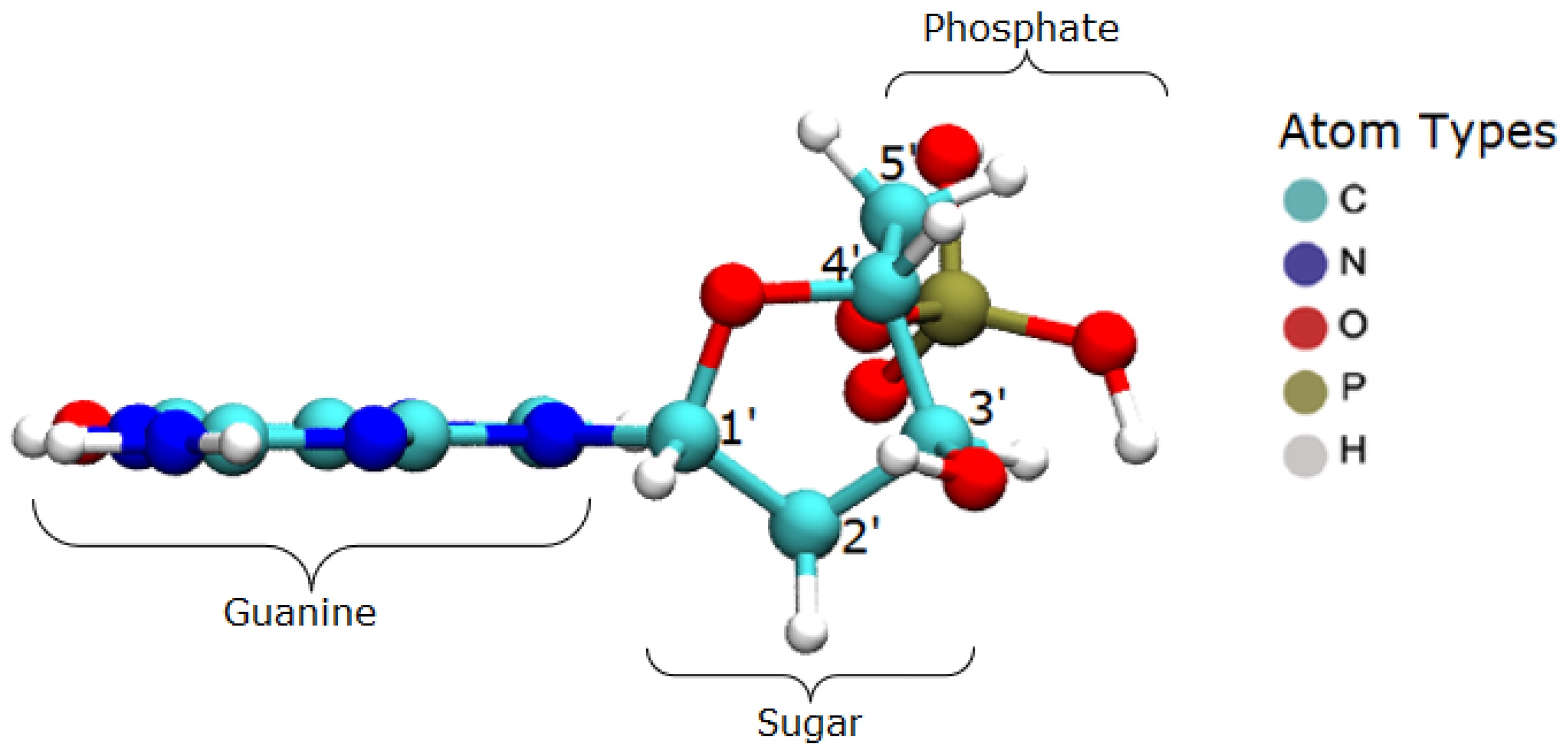

The hydroxyl radical causes the dissociation of guanine, one of the nitrogenated bases in the nucleotides that make up DNA (image CDMF)
The research focused on the damage done to DNA indirectly by oxidizing chemical species such as the hydroxyl radical.
The research focused on the damage done to DNA indirectly by oxidizing chemical species such as the hydroxyl radical.

The hydroxyl radical causes the dissociation of guanine, one of the nitrogenated bases in the nucleotides that make up DNA (image CDMF)
Agência FAPESP* – High doses of X-rays and other kinds of ionizing radiation can damage the DNA present in the cell nucleus, a phenomenon which can both lead to the development of cancer in humans and be used to kill cancer cells. This damage to DNA occurs through two mechanisms: one involves the direct physical impact of ionizing particles; the other is indirect, involving an attack on nucleic acids by chemical species arising from water radiolysis (the decomposition of hydrogen bonds between H2O molecules).
In an article published in the International Journal of Molecular Sciences, Brazilian researchers report the results of a study of the second mechanism, conducted with the aim of understanding how a type of free radical called the hydroxyl radical (·OH) affects guanine nucleotides and causes their dissociation.
Guanine (G) is one of the nitrogenated bases that make up the nucleotides in DNA and RNA. The others are adenine (A), cytosine (C) and thymine (T).
To study this mechanism, the group deployed time-dependent density functional theory (TDDFT), which is part of quantum mechanics and describes electronic properties in solid-state physics, quantum chemistry, materials science, biochemistry, biology, nanosystems and atomic-scale systems.
The researchers concluded that hydrogen extraction was successful in attacks on different oxygen atoms, dissociating DNA into three main fragments: the phosphate group, deoxyribose sugar, and the nitrogenous base. According to the authors, the calculations described in the article can serve as a reference for the adjustment of reactive force fields so that more complex DNA structures can be studied using classical molecular dynamics, including both direct and indirect DNA damage.
The study was conducted by researchers at the Center for Development of Functional Materials (CDMF) and the State University of Campinas’s Gleb Wataghin Institute of Physics (IFGW-UNICAMP). CDMF is a Research, Dissemination and Innovation Center (RIDC) funded by FAPESP and hosted at the Federal University of São Carlos (UFSCar).
The study received funding from FAPESP via three projects (18/15316-7, 20/08647-7 and 15/21873-8).
The article “A TDDFT-based study on the attack of the ·OH radical on a guanine nucleotide” is at: www.mdpi.com/1422-0067/23/17/10007.
*With information from CDMF, one of FAPESP’s Research, Dissemination and Innovation Centers.
Republish
The Agency FAPESP licenses news via Creative Commons (CC-BY-NC-ND) so that they can be republished free of charge and in a simple way by other digital or printed vehicles. Agência FAPESP must be credited as the source of the content being republished and the name of the reporter (if any) must be attributed. Using the HMTL button below allows compliance with these rules, detailed in Digital Republishing Policy FAPESP.





